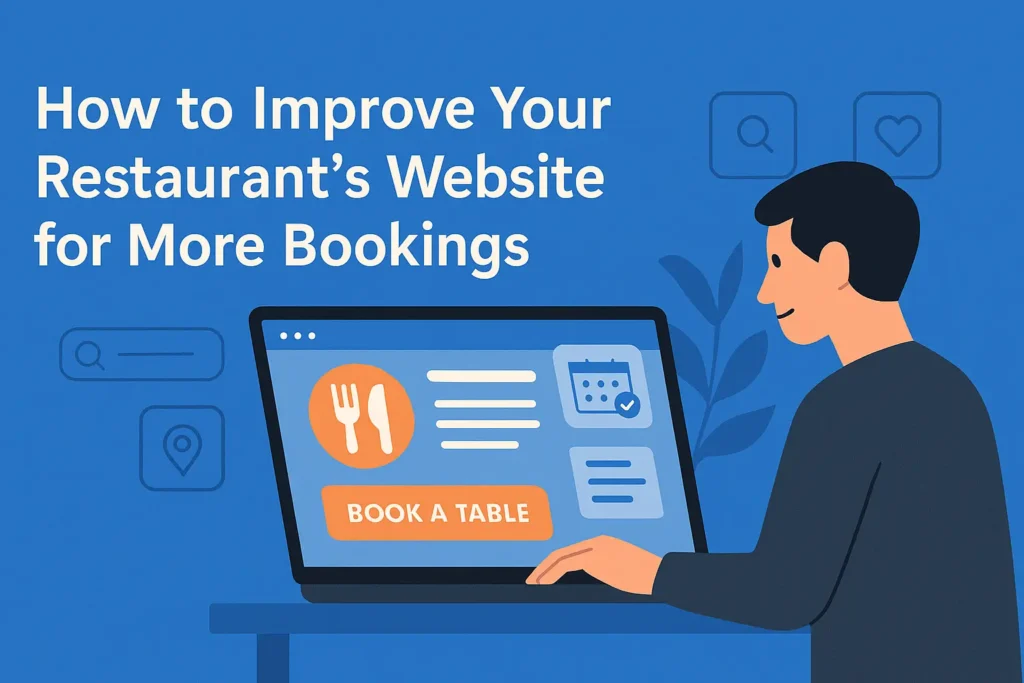The website of your restaurant is often the very first point of interaction for potential guests with your brand. Long before they taste your food or step inside the dining room, they will judge your restaurant based on its website.
That’s why creating a website that is both functional and persuasive is important for driving more reservations. Whether you’re working with a restaurant marketing agency or managing everything in-house, focusing on user experience, design, and various other aspects is important.
In this article, you will explore various tips that will help you optimize your website for more bookings. These tips will help you ensure that your website ensures more conversions and reservations.
Why Running a Website is Important for Your Restaurant?
The modern diner does their research before making a decision. They compare menus, check out reviews, and even browse through social media before committing to booking a table. Your Website is the hub that ties all of these touchpoints together.
If it looks outdated, loads slowly, or makes reservations difficult, you will potentially end up losing customers to competitors who have invested in a better online presence.
Most importantly, search engines like Google pay attention to user behaviour. If people bounce off your site quickly or struggle to find the information they need, your rankings may fall.
Improving your website is not just about aesthetics. In fact, it is also about creating a seamless customer journey that builds trust and drives action.
Essential Ways to Optimize Your Restaurant Website
Here are some essential ways to optimize your restaurant website in the best possible manner:
Simplify Navigational Layout:
A cluttered website can leave visitors overwhelmed. Instead, you need to keep your navigation simple and intuitive. Your homepage should provide direct access to the most important pages: menu, reservations, location, and contact information.
A sticky navigation bar(one that stays visible as the user scrolls) is an excellent way to ensure guests never feel lost.
Apart from that, you should prioritize the mobile experience. Most users will visit your site from their smartphones. You should make sure that the text is easy to read, buttons are thumb-friendly, and the design adjusts seamlessly to different screen sizes.
Highlight Your Menu the Right Way:
Your menu is one of the biggest selling points of your restaurant. You should avoid making visitors download a PDF or zoom in on a poorly formatted image. Instead, you can create a mobile-friendly, searchable menu that is visually appealing and easy to browse. High-quality food photography can make a major difference.
To go a step ahead, you need to include dish descriptions that highlight ingredients, preparation styles, or unique selling points. People want to know what makes your dish stand out. A well-presented menu can help you turn visitors into full-time customers.
Make Reservations Convenient:
One of the most common frustrations faced by diners is the difficulty in booking a table online. If your website doesn’t have an integrated booking system, you will miss major opportunities.
That’s why it is important to implement a reservation widget or booking software that lets users choose a time, date, and size of the party without the requirement to leave your site.
If you already have this feature, you should test it on a regular basis. Nothing kills faster than a broken or bugged booking system. And if possible, you should send instant confirmation to notify guests that their reservation is confirmed.
Build Trust Through Social Proof:
You need to keep in mind that guests want reassurance that your restaurant is worth their time and money. When you add links to testimonials, positive reviews, and even embed user-generated content like social media posts, you will be able to establish credibility.
Showcasing awards, media features, or community involvement will also add an extra layer of authority. Video content works particularly in such situations. A short clip featuring your chef, staff welcoming guests, or behind-the-scenes kitchen content will help you create an authentic connection and humanize your brand.
Optimize for Local Search:
Even if your restaurant has glowing reviews, you won’t be able to attract new diners if people are not able to find you online. You need to make sure that your website is optimized for SEO.
It will make it easier for locals and visitors to find your restaurant. This further increases your chances of filling tables consistently.
Apart from all these things, you need to make sure that your website has speed and performance to offer. Plus, you need content that adds value to the website.
To Summarize
Improving your restaurant’s website isn’t just about making it look pretty. In fact, it is also about creating an experience that feels effortless for the visitor and persuasive enough to convert them into a booking. From streamlining navigation to integrated reservations, every detail is important.








